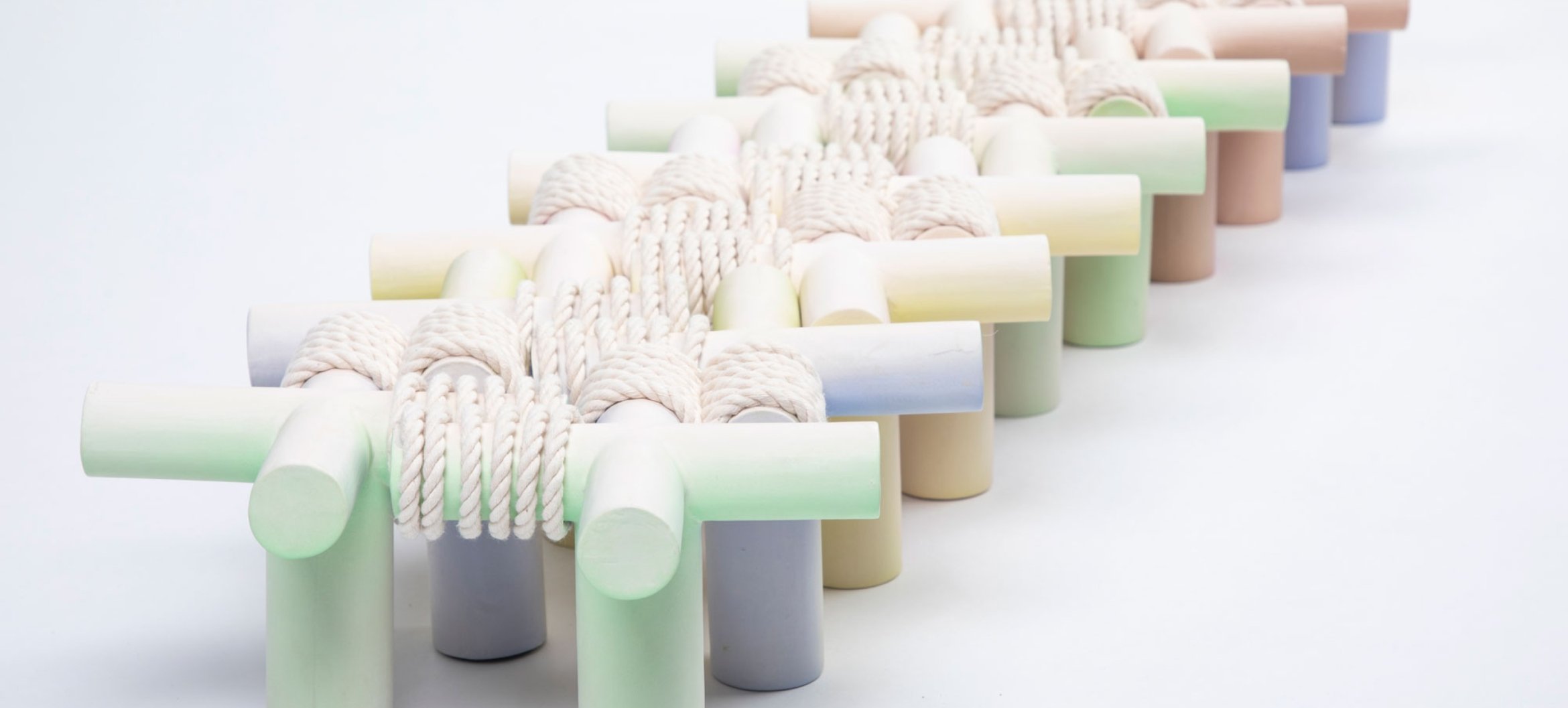SPOTTED: Product Design alumna Juyoung Jung tells Metropolis M about her ceramic family of sculptures
- Fine Art
- Design
Every year, magazine Metropolis M releases a Graduation Special, featuring work by several alumni who graduated as visual artists. Juyoung Jung graduated from Product Design in Arnhem and is one of the alumni featured in the special. Metropolis M asked the artist the question, "What is the story behind your work?"

The ceramic family of sculptures that Juyoung Jung presents under the title 0D to 4D finds its origins in a very different medium: textile. In recent years, the artist has become fascinated by the way in which threads, once intertwined, can form robust structures. By weaving, knitting and embroidering with ceramics, Jung has made countless vases, lamps and wall installations, of which she displays a selection during the final exam exhibition.
In some of those works, textile features not only as a source of inspiration but also as a material. She has used rope to knot different ceramic components together into caterpillar-like sculptures which, as she shows me, can easily change form as a result. That effect of motion is also created by the colour of the objects. She takes me to one of the wall sculptures and points out how the colour changes as we move through the room. "When you look from the left-hand side, you see mainly green hues", she says. "But if you look from the right, the sculpture suddenly appears to be orange." As a result, an ever-changing sculpture is created, depending on the visitor's perspective. For this reason, Jung describes her work as four dimensional, or 4D.
The watercolour paint that covers the sculptures is applied and finished by the artist herself. Before Jung came to ArtEZ, she studied watercolour painting in Korea. For her, the depth of the colours she uses is important, as is the atmosphere and the feeling of spaciousness they evoke.
Jung's working method may certainly be described as unusual. Although she likes working with her hands, she also combines that manual activity with computer techniques. With the help of 3D-rendering, she first creates a digital image of the component she wants to print. Once it rolls out of the 3D printer, she makes a plaster mould of the object. With the help of that mould, she can then make countless ceramic casts, which she knots together with rope.
After graduation, Jung would like to start her own ceramics studio. The enthusiasm with which her sculptures have been received during the graduation exhibition suggests she will succeed.
Author: Marsha Bruinen, writer on art and philosophy, and web editor at Metropolis M.


